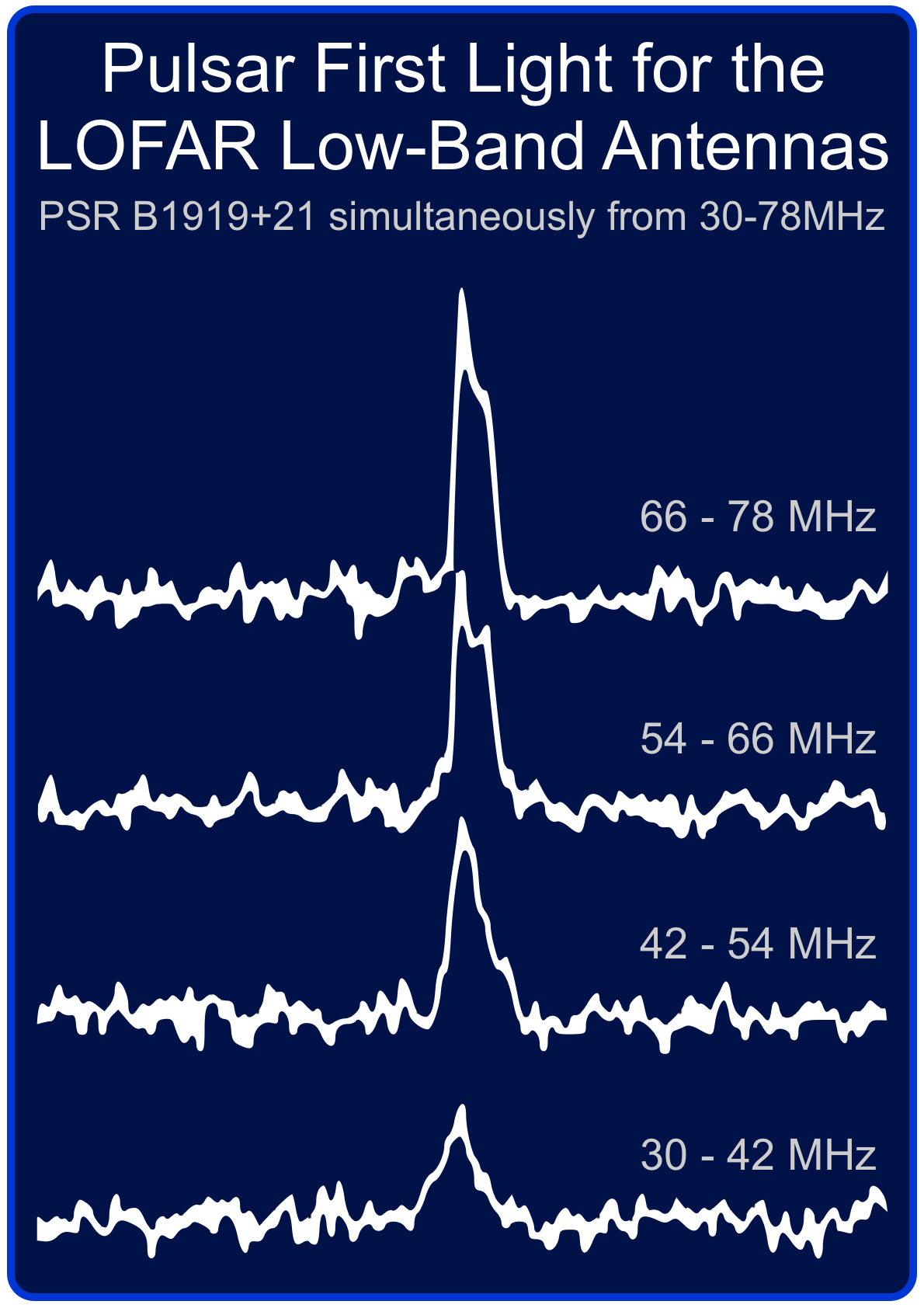| Description: | The discovery of the first pulsar, B1919+21, was made at the low observing frequency of 82MHz, using the Cambridge dipole array. It is thus fitting that the first pulsar detected with the LOFAR low-band antennas (LBAs) is also B1919+21. Using 48 LBA dipoles from the station CS302, we simultaneously observed the entire frequency band from 30-78MHz. This is likely the largest bandwidth observation of a pulsar ever made at these frequencies. For a variety of reasons - not all intrinsic to the pulsar itself - the pulse profile of B1919+21 changes significantly over this large frequency range. Note that only about 0.5 of the total rotational phases are shown here, and the profiles are rotated so that the peaks line up. Studying the still poorly understood pulsar emission mechanism at low-frequency is a principal goal of the LOFAR Pulsar Working Group. We will be using B1919+21 and pulsars like it to further commission the beam-formed and tied-array observing modes of LOFAR in the low band. |

